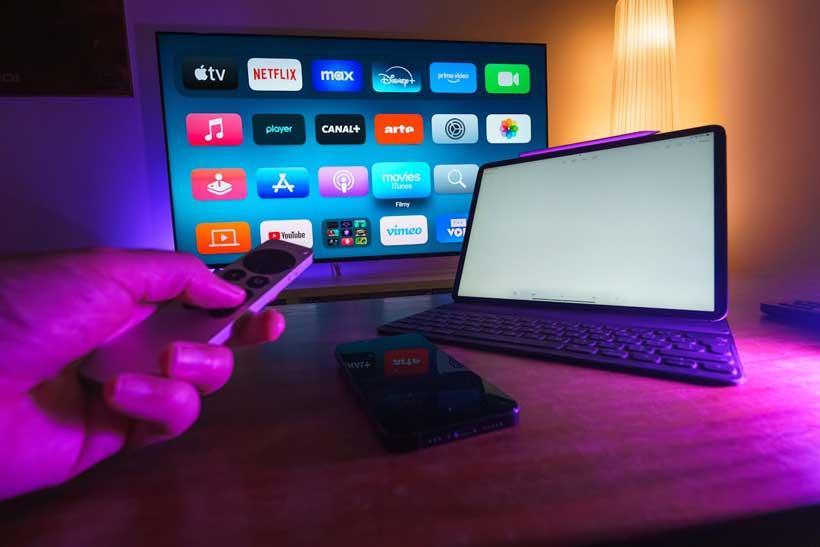By
Raisa Fadhilah Yasril
Africa-Press – Lesotho. The digital world is constantly evolving. Today, digitalization encompasses not only security and data but also the economy. One major aspect of this transformation is the rise of the subscription model. In the digital age, subscription-based services—such as those offered by Netflix, Spotify, or Canva—have become daily necessities for many. These features provide optimal services to consumers while benefiting businesses and app developers through recurring purchases. However, behind their widespread adoption lies a clear disparity between consumers in developed and developing countries. The use of subscription features influences both access to technology and consumer behavior.
While subscription models offer convenience and flexibility, they also represent digital privileges that can reinforce existing inequalities, especially in the Global South, which consists largely of middle-income countries. Many nations across Africa, Asia, and Latin America still face significant challenges in achieving digital inclusivity. Unlike wealthier regions, these countries often struggle with limited internet access, inadequate infrastructure, low digital literacy, and financial constraints.
Subscription Features as Digital Privileges
The evolution of business models through the adoption of subscription features has shifted public preferences. Traditional models, which involved direct ownership and purchase of products, have given way to online access without the need for physical ownership. This change has encouraged more businesses to adopt subscription systems, creating a wider range of options for consumers. Subscription models grant users specific, time-bound privileges, all dependent on continued payments. These users can access more services than non-subscribers.
According to a study by McKinsey & Company, consumers’ decisions to use subscription services are influenced by several factors:
● Affordable pricing
● High service quality
● Positive experiences and impressions
● Convenient and easy access
Subscription Features and the Challenges of Digital Inclusivity in the Global South
Digital inclusivity means ensuring that all individuals and communities—regardless of socio-economic status, geographical location, gender, or education level—can access digital technology. While developed countries have largely achieved this, many in the Global South continue to face obstacles:
Infrastructure Gaps: Many rural and underserved areas lack reliable internet connectivity, electricity, and digital devices, making access to subscription services difficult or impossible.
Financial Constraints: Low-income populations often cannot afford ongoing subscription fees or the cost of compatible devices.
Digital Literacy: Limited education and exposure to digital tools hinder users’ ability to navigate complex subscription platforms or understand digital rights and privacy. For example, some users may not realize that free trials require cancellation to avoid charges.
Social and Cultural Barriers: Gender norms, language differences, and social exclusion can prevent certain groups from engaging with digital services.
The use of subscription features is increasing, especially in developed countries like the United States. According to TechTarget, Americans spend at least $924 per month on subscriptions—a figure that could rise with increased use of digital services for leisure and entertainment. Music streaming apps are among the most widely used.
In the Global South, where many people live on low or irregular incomes, even modest subscription fees can be a barrier. Lack of digital literacy and internet access further limit the use of services like Netflix, Spotify, and Disney+. In Indonesia, for example, film and music streaming services are popular, but most people spend less than Rp. 50,000 (about $3.07) per month on subscriptions, and only a few can afford more than Rp. 100,000 (about $6.14). For many Indonesians, even these amounts are significant expenses.
A recent example from Indonesia highlights the challenges faced by online ride-hailing drivers. Their income is uncertain and depends on how long they work. According to Kompas.com, additional operational subscription fees for drivers can lead to losses on top of the 15% service fee and 5% social security allocation. This illustrates how subscription features can perpetuate inequality and even create exploitative systems. The implementation of subscription features can be considered a new form of capitalism in digital business and reinforces the dominance of companies that use this business model.
In Africa, internet usage for digital services remains low. GSMA Intelligence projects that by 2025, 75.1% of mobile phones will have broadband access, connecting people via 3G, 4G, and 5G networks. However, this does not guarantee equal access to digital services. Broadband packages often cover only basic services like voice calls and SMS.
These challenges show that simply offering subscription-based digital services does not guarantee inclusivity. Such models risk creating a digital divide, where only privileged individuals and communities enjoy the benefits of exclusive services, while marginalized groups remain excluded or only partially included.
Rethinking Subscription Models for Inclusivity
To promote digital inclusion, subscription models must be reimagined:
Flexible pricing to accommodate different income levels
Community-based access to reach underserved populations
Multilingual support to assist users with limited digital skills
Robust data protection and privacy to build trust
Subscription services have the potential to democratize access to digital tools and content, but only if designed with inclusivity in mind. Without thoughtful adaptation, these models risk deepening existing inequalities in the Global South. By embracing flexible pricing, community access, multilingual support, digital literacy, and supportive policies, we can move closer to a future where digital inclusion is a reality for all.
moderndiplomacy
For More News And Analysis About Lesotho Follow Africa-Press






